| [1] Wu C,Zhou Y,Lin C,et al.Strontium~containing mesoporous bioactive glass scaffolds with improved osteogenic/ cementogenic differentiation of periodontal ligament cells for periodontal tissue engineering.Acta Biomater.2012;8(10):3805-3815.[2] 李玮,孟雪梅.牙周组织工程种子细胞及其体内移植方法的研究进展[J].中国修复重建外科杂志, 2010,24(10): 1249-1252.[3] Song DS,Park JC,Jung IH,et al.Enhanced adipogenic differentiation and reduced collagen synthesis induced by human periodontal ligament stem cells might underlie the negative effect of recombinant human bone morphogenetic protein-2 on periodontal regeneration.J Periodontal Res. 2011; 46(2):193-203.[4] Ji K,Liu Y,Lu W,et al.Periodontal tissue engineering with stem cells from the periodontal ligament of human retained deciduous teeth.J Periodontal Res. 2013; 48(1): 105-116. [5] Li YF,Yan FH,Zhong Q,et al.Effect of hBMP~7 gene modified bone marrow stromal cells on periodontal tissue regeneration.Zhonghua Yi Xue Za Zhi. 2010; 90(20): 1427-1430.[6] 储庆,吴织芬,王勤涛,等.人转化生长因子-β1基因转染对人牙龈成纤维细胞成骨特性的影响[J].华西口腔医学杂志,2009,27(3):264-267.[7] Zhou W,Zhao CH,Mei LX,et al. Effect of the compound of poly lactic-co-glycolic acid and bone marrow stromal cells modified by osteoprotegerin gene on the periodontal regeneration in Beagle dog periodontal defect. Hua Xi Kou Qiang Yi Xue Za Zhi. 2010;28(3): 324-329.[8] 蒋欣益,杨霁,柴召午,等.低强度脉冲超声波联合引导骨组织再生[J].华西口腔医学杂志,2012,30(5):487-492.[9] Morsczeck CO,Dress J,Gosau M,et al. Lipopolysaccharide from Escherichia coli but not from Porphyromonas gingivalis induce pro-inflammatory cytokines and alkaline phosphatase in dental follicle cells.Arch Oral Biol. 2012;57(12):1595-1601.[10] 荆恒,李宁毅,谭帅,等.骨髓基质干细胞的体外培养及其细胞片层制备[J].国际口腔医学杂志, 2010, 37(3): 272-274.[11] Li C,Yang X,He Y,et al.Bone Morphogenetic Protein-9 Induces Osteogenic Differentiation of Rat Dental Follicle Stem Cells in P38 and ERK1/2 MAPK Dependent Manner. Int JMed Sci. 2012;9(10): 862-871.[12] 崔娟,孙克勤,李霞,等.人牙龈成纤维细胞的原代培养及鉴定[J].中国医药导报,2010,7(3):26-27.[13] Shirakata Y,Takeuchi N. Effects of enamel matrix derivative and basic fibroblast growth factor with μ-tricalcium phosphate on periodontal regeneration in one-wall intrabony defects:an experimental study in dogs. Int J Periodontics Restorative Dent. 2013;33(5): 641-649.[14] Santosh Kumar BB,Aruna DR, Gowda VS,et al. Clinical and radiographical evaluation of a bioresorbable collagen membrane of fish origin in the treatment of periodontalintrabony defects: A preliminary study.J Indian Soc Periodontol. 2013;17(5): 624-630.[15] Shalumon KT,Sowmya S.Effect of incorporation of nanoscale bioactive glass and hydroxyapatite in PCL/chitosan nanofibers for bone and periodontal tissue engineering. J Biomed Nanotechnol. 2013;9(3): 430-440.[16] 解涵,刘宏伟.人骨髓基质干细胞对人牙周膜干细胞膜片再生牙周膜样组织的影响[J].实用口腔医学杂志, 2011, 27(2):153-158. [17] Tang Z,Akiyama Y,Okano T.Recent development of temperature responsive cell culture surface using poly(Nisopropylacrylamide).J Polym Sci Pol Phy. 2014;52(14):917-926.[18] 陈涛,王艳辉,卜令学,等.应用细胞片层技术构建功能性组织工程骨的动物实验研究[J].华西口腔医学杂志, 2011, 29(4):442-445.[19] 姚超,卜令学,王科,等.应用细胞片层技术构建组织工程骨修复犬下颌骨缺损的实验研究[J].华西口腔医学杂志, 2012,30(3):229-233.[20] Elloumi-Hannachi I,Yamato M,Okano T.Cell sheet engineering: A unique nanotechnology for sca old-free tissue reconstruction with clinical applications in regenerative medicine.J Inter Med. 2010;267(1):54-70.[21] 张森林,毛天球.应用富血小板血浆和骨髓基质细胞构建细胞-膜片及其异位成骨的实验研究[J].临床口腔医学杂志,2009,25(3):147-150.[22] Li G,Wang X,Cao J,et al.Coculture of peripheral blood CD34+ cell and mesenchymal stem cell sheets increase the formation of bone in calvarial critical-size defects in rabbits.Br J Oral Maxillofac Surg. 2014; 52(2):134-139.[23] 张剑英,付云,俞少杰.人牙周韧带细胞膜片的体外实验研究[J].中华口腔医学研究杂志(电子版),2013.7(1):31-34.[24] Kano T,Yamamoto R,Miyashita A,et al.Regeneration of periodontal ligament for apatite-coated tooth-shaped titanium implants with and without occlusion using rat molar model.J Hard Tissue Biology. 2012;21(2): 189-202.[25] 姚超,卜令学,王科,等.应用细胞片层技术构建组织工程骨修复犬下颌骨缺损的实验研究[J].华西口腔医学杂志, 2012,30(3):229-233.[26] 王方,谢诚,吴国锋,等.组织工程牙周膜细胞片的体内实验研究[J].实用口腔医学杂志,2011,27(2):177-180.[27] 那思家,黄芳,郭维华,等.牙周膜干细胞膜片的构建及其生物学特性的研究[J].牙体牙髓牙周病学杂志, 2011,21(2): 77-81.[28] 马东洋,任利玲,陈富林,等.基于细胞膜片构建无外支架组织工程骨的实验研究[J].中国口腔颌面外科杂志, 2010, 8(4):359-363. [29] Zhou J,Shi S,Shi Y,et al.Role of bone marrow derived progenitor cells in the maintenance and regeneration of dental mesenchymal tissues.J Cell Physiol.2011; 226(8):2081-2090.[30] Wei F,Qu C,Song T,et al.Vitamin C treatment promotes mesenchymal stem cell sheet formation and tissue regeneration by elevating telomerase activity.J Cell Physiol.2012; 227(9):3216-3224.[31] 陈茜,唐倩.牙周组织再生治疗中牙源性干细胞的研究进展[J].中华口腔医学研究杂志:电子版, 2013,7(5): 419-422.[32] D’Alimonte I,Nargi E,Lannutti A,et al.Adenosine A1 receptor stimulation enhances osteogenic differentiation of human dental pulp-derived mesenchymal stem cells via WNT signaling.Stem Cell Res.2013;11(1):611-624.[33] Liu N,Shi S,Deng M,et al.High levels of β-catenin signaling reduce osteogenic differentiation of stem cells in inflammatory microenvironments through inhibition of the noncanonical Wnt pathway.J Bone Miner Res.2011;26(9):2082-2095.[34] 叶眉,陈芳,姜大川,等.富血小板血浆和纳米羟基磷灰石胶原支架对人脂肪干细胞成骨分化的影响[J].口腔医学研究,2009,25(4):420-423.[35] 常会,任凤梅,范华乐,等.相分离法制备聚合物分散液晶研究进展[J].高分子材料科学与工程, 2010,26(8):165-167, 171.[36] 李云捷,陈列勤,张雪莲,等.玉米醇溶蛋白复合膜在草莓保鲜中的应用研究[J].食品研究与开发, 2009,30(12): 157-159.[37] 张旭,于国萍,李昕,等.玉米醇溶蛋白膜的抗氧化和抑菌作用研究[J].粮食与食品工业,2009,16(2):28-31.[38] 胡晓文,李斯日古愣,李玲蔚,等.应用羟基磷灰石生物陶瓷引导骨再生对单牙种植修复体牙龈形态的影响[J].中华口腔医学杂志(电子版),2010,4(2):180-188.[39] 王云,王青山.纳米羟基磷灰石及其复合材料在口腔医学中的应用[J].中国组织工程研究与临床康复, 2010,14(8): 1426-1428.[40] 喻秀丽,杨凯,项立,等.口腔修复膜预防腮腺肿瘤术后味觉出汗综合征的疗效观察[J].重庆医科大学学报, 2010, 35(11):1759. |
.jpg)
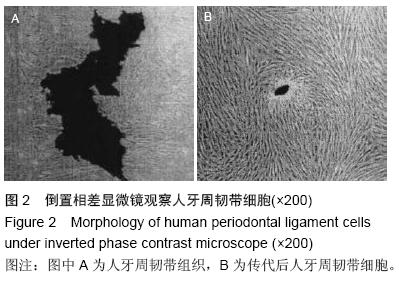
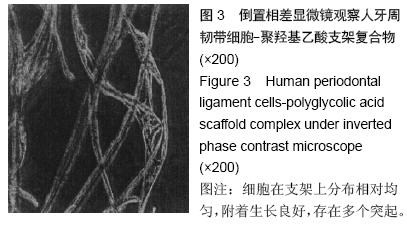
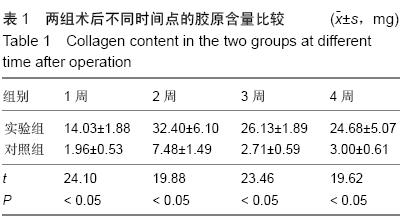
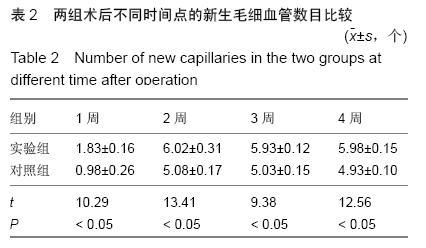
.jpg)
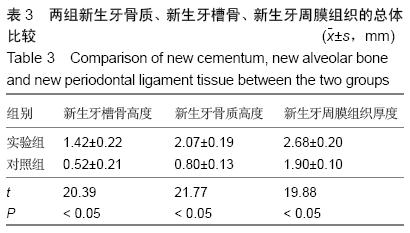
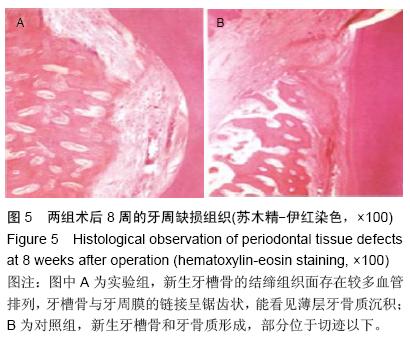
.jpg)
.jpg)